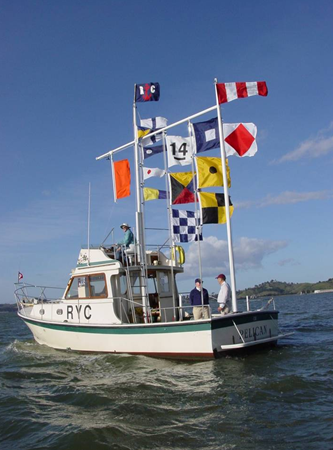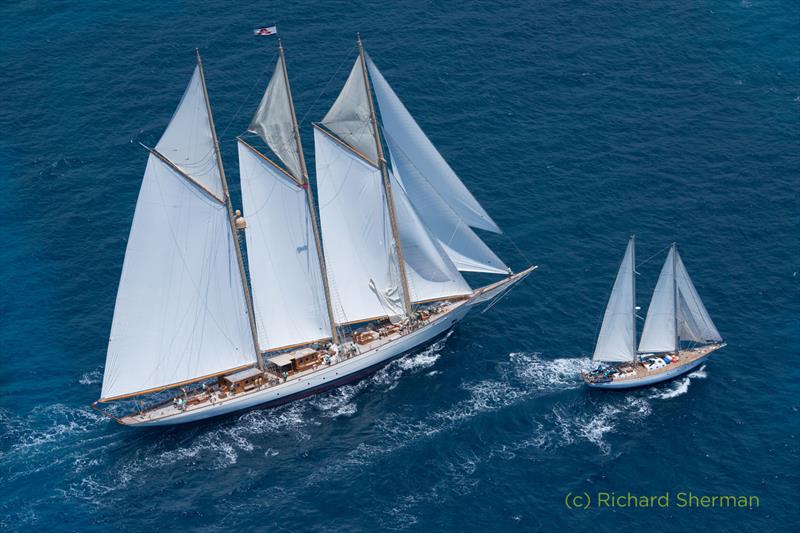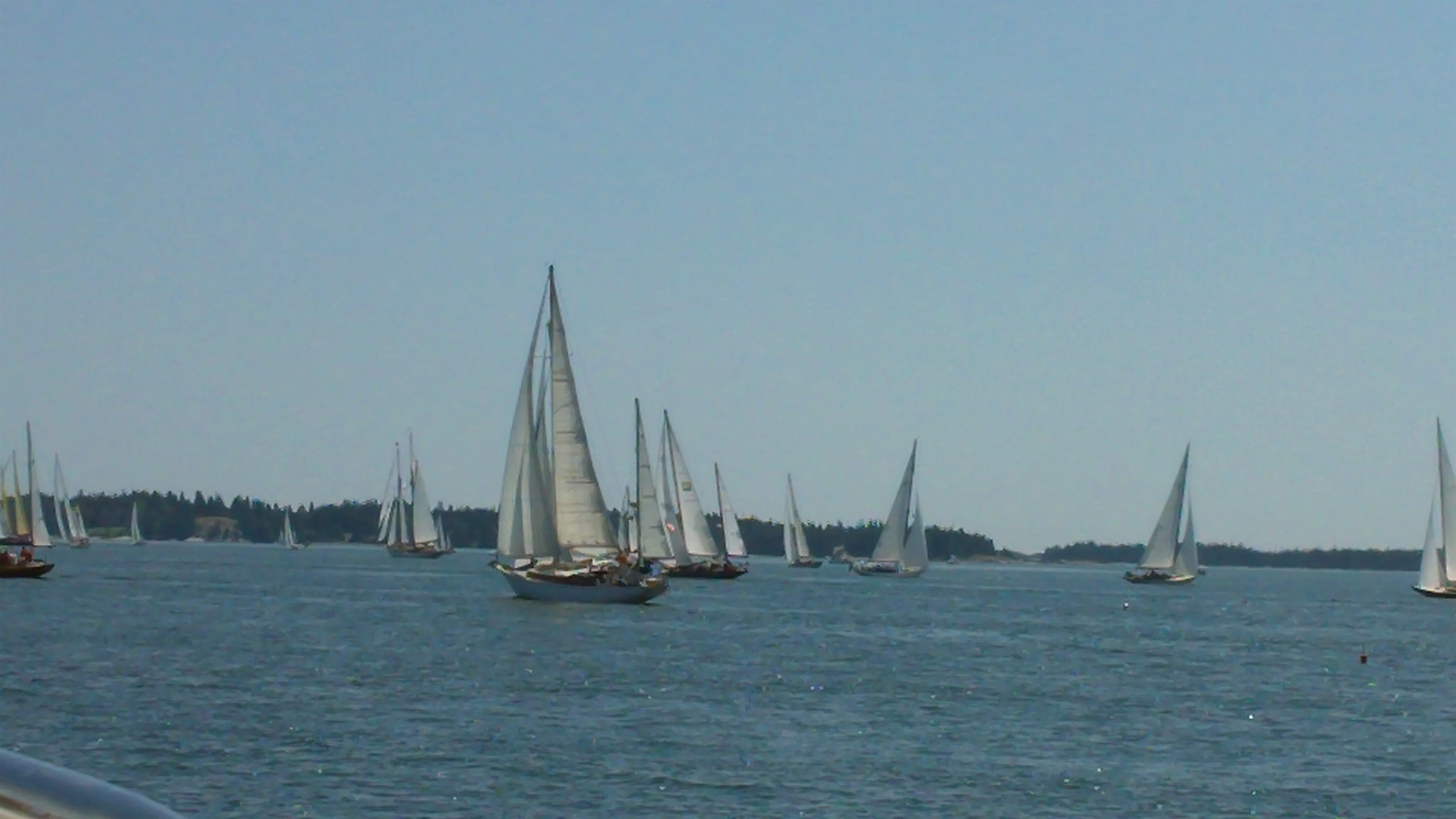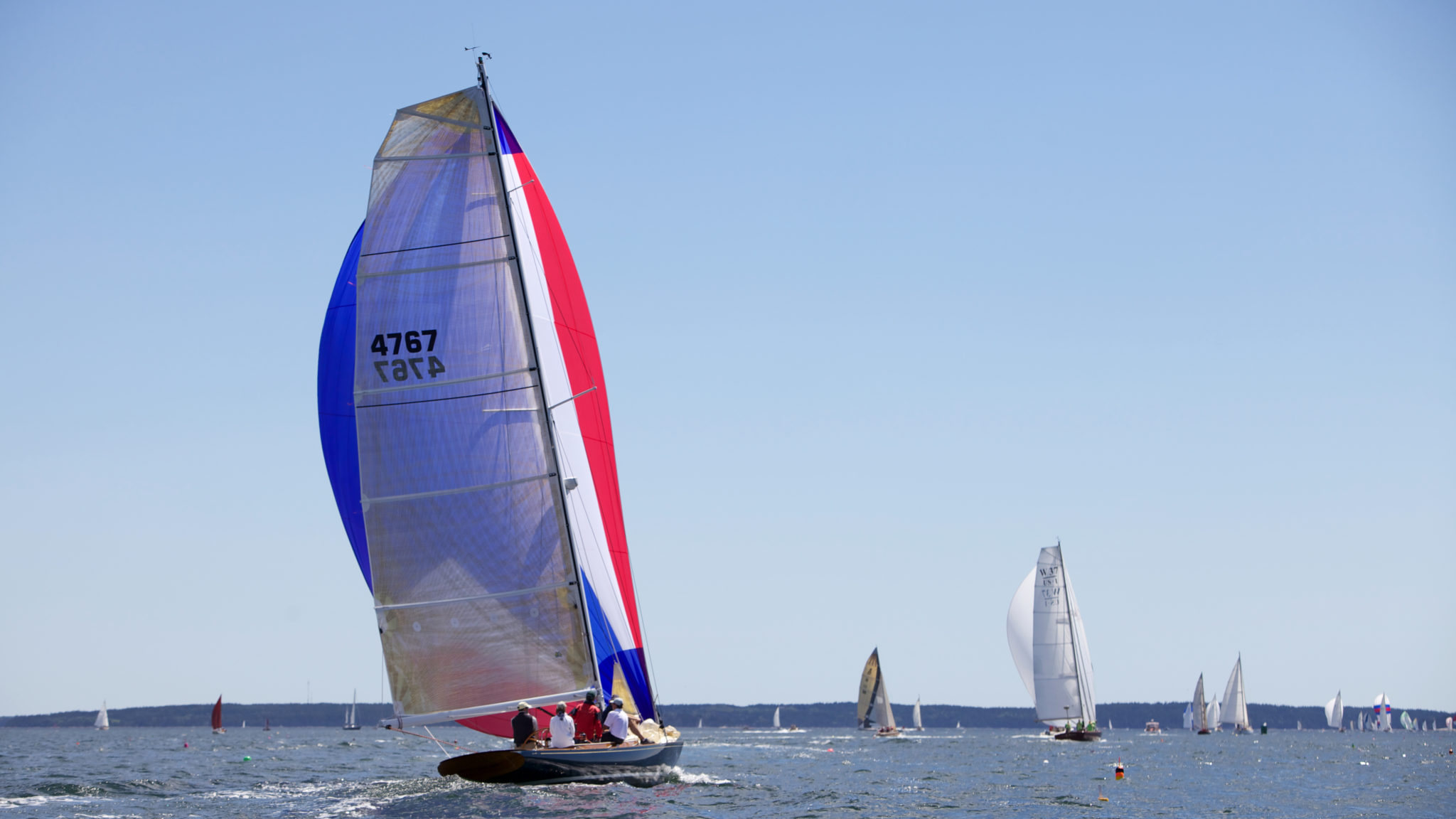The Classic Racing Issue #1: How to Build a Really Good Race.

Contrary to popular belief, it takes more than two sailboats in close proximity to make a race. Or, at least a GOOD race. In fact, it takes a committee. A race committee, with a feel for the nuance of the handicap rule used in that race, and how that rule interacts with the course for that race.
Like most sailors we’re competitive bastards. Any time we see another boat we start tweaking sails to beat the band. But we learned a long time ago that some boats are just plain faster than others. And we don’t get the right gratification if our “amazing victory” is just because we happen to be aboard the faster boat. That’s why handicap racing was invented.
Funny thing about handicap racing, it requires a solid handicap rule. That is, a rating system that levels the competition from one boat to another. A rating system theoretically helps us assess how fast one boat should be compared to all other boats in the world. There’s a huge range of handicap rating systems in the world today; from simple rules-of-thumb based on statistical systems like the Performance Handicap Rating Formula, or PHRF; to full-on computer-administered Velocity Prediction Program-based rules that attempt to “know” the speed potential of any boat in any condition.
But even the most complex, exotic, and costly velocity prediction rule makes assumptions that lower the resolution of that rule, and render it less than perfect. And it is these imperfect assumptions that throw monkey wrenches into race organizers’ best-laid plans. And often determine whether a regatta is a success …
Or a pointless parade of expensive things that float.
The Right Rule for the Right Course.
Rating rules generally work well when the range of boats they’re asked to compare is not too great. Don’t bother comparing a Sunfish to a super-maxi. You can’t. And all rules must postulate about the courses sailed and how those courses affect boat speed. For a regatta to work well, the race managers MUST manage these two matters to play to the strengths of the chosen rating system for that race.
We’ll take a look at the importance of proper grouping and classing of race boats in another story. But for now, let’s rant a bit about how much difference the right race course can make in the results of a handicap race.

Among the vast variety of boats that race, we have some boats that are witches upwind, while others that excel on reaches or runs. Rating rules crunch a boat’s data to try get a look at the characteristics of that boat and these different performance profiles. Most rules attempt to average the speed of each boat over a typical race course. If the rule is very sophisticated, it can incorporate a factor that allows the race committee to “dial in” the percentage of upwind, reaching and downwind sailing for a particular course — but most rules just plan on equal parts of each point of sail.
If the race course sailed differs markedly from that ⅓ beat, ⅓ reach, ⅓ run formula, then the rule stops working well at the paper and pencil exercise of balancing the handicaps of the different boats in a race’s scratchsheet. What happens with this kind of unbalanced race? Quite often it goes to hell. Racers get grumpy, and the after-party becomes no fun.
Presented for your consideration: a regatta that shall remain nameless, that happened in the sunny, sandy waters of Southern New England last season. This classic race featured a diverse fleet: 12-Meters through cute little daysailers through majestic schooners and even a square-rigger. This diversity in the race fleet was a nightmare to handicap. At the last minute,perhaps in a well-intentioned bid to “give the schooners a chance”, the race committee set a course that started on a close reach, jibed to a broad reach, and finished with a close-hauled fetch to the finish. There was no beating up a windward leg at all.
But wait a minute, you say: The fetch to the finish was close-hauled, right? And it was about a third of the distance sailed, right? How bad could it be? Well, here’s the thing: The race course length is measured as the crow — or seagull — flies. So, that fetch was, let’s say 6 miles. If the final mark had been 6 miles straight upwind from the downwind mark, instead of 45 degrees off, a tacking yacht would have sailed 1.4 x 6 miles to get there or 8.4 miles; that works out to an extra 2.4 unmeasured miles added to, say, an 18-mile measured race course. If average boat speed was 6 knots, that would change the elapsed time from 108 minutes to 122 minutes and 24 seconds– almost 15 minutes slower.
These are the kinds of issues that raise havoc with ratings, especially the simpler, less costly, owner-measured systems like the Classic Rating Formula, or CRF. Since the handicap is awarded based on time over distance, and the distance measured is out of line with the distance expected by the rule, the rating’s accuracy erodes. Boats that carry a large rating penalty for their close-winded ability to go fast to windward are over-penalized — they never had to sail the 2.4 miles that the rule expected. And boats that suffer going to windward, but excel on a reach, are unduly rewarded by the shorter course.
The ugliness of this race was carried into the social fabric of the event’s after party. It took place on a beach. Sand got kicked in drinks. We were there. It was no fun.
The 1,2,3 Good-Race Rubric
What’s been puzzling to us about such bummer handicap races, is how easy it would be to establish a common set of race rules. Just like everything else in quality naval engineering, it would involve balancing offsetting factors to create a fair and balanced course.

And hence the magic of classic and Spirit-of-Tradition racing. It is not the Olympic trials or the America’s Cup. Reasonable choices can be made by reasonable people to balance the subjective beauty and narrative of a classic race, with the objective science of matching the fleet to the race course.

To our minds, that would mean balancing the following set of choices:
- The Good Ride Trumps All: We are fortunate to race in lovely classic and modern-classic yachts. And if a race course is lucky enough to send a classic fleet through fabulous scenery, by all means do it. In the best venues, it almost never matters that the legs are unbalanced or that some boats are faster than others. A long beat through some of God’s country, like Maine’s Eggemoggin Reach or around Narragansett Bay’s Jamestown Island, in a classic yawl and surrounded by a gorgeous fleet, makes up for most any weakness in a silly racing rule. Try it. You’ll see.
- If You Have to Set A Course, Please Set a Fair One: If your course is in an open bay, where you are setting your own marks, there is no shortcut to reviewing the fleet’s scratch sheet, classing them properly, (more on that in another story) matching each and every class to the right racing rule. And then setting a balanced course that offers equal parts run, reach and tactical beats to weather. Don’t forget starting lines also need to be long enough, square enough and clear marks of all hazards to navigation. And don’t forget the finish: It also must be balanced and fair. If you can control the course, it is only fair to have a fair course. It’s that simple.
- Be extra vigilant with the Halfsy’s Race: The tricky regatta is the one that has some set markers and some government roundings cribbed together and a location where there’s flexibility to set a balanced course. This is the hard event to pull off for any race committee. Organizers must be careful that the course — in its entirety — does not offend the logic of the handicap rule used.
We find what works here is to get as close to balanced reaches, runs and beats as possible. And then have equal parts of weird stuff, to keep the bias even across the entire fleet.
Obviously, this is our engineering-driven minds let loose on the complex problem of solving for consistently-managed classic and Spirit-of-Tradition races. And of course, we realize how challenging it is to run a great race. And so respect what race committees do. We are always open to any and all feedback on improving our vision of a good regatta.
But we are hard pressed to see how following these three simple rules would have hurt any classic race we’ve ever sailed. And we know of several races where these guidelines could have saved the day. We bet you probably know several too.
We look forward to your feedback.